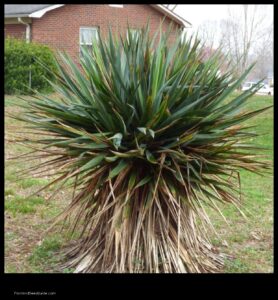
Why is my snake plant turning brown?
There are a few reasons why your snake plant might be turning brown.
- Overwatering
- Underwatering
- Too much sun
- Not enough sun
- Pests
- Disease
Let’s take a closer look at each of these potential causes.

Overwatering
Snake plants are succulents, which means they are adapted to store water in their leaves. As a result, they are very tolerant of drought and can go for long periods of time without water.
However, if you overwater your snake plant, it can cause the roots to rot, which will eventually lead to the leaves turning brown.
To avoid overwatering your snake plant, make sure to only water it when the soil is dry to the touch. You can also check the moisture level by sticking your finger into the soil. If the soil is dry, it’s time to water your snake plant.
Underwatering
Snake plants can also turn brown if they are underwatered. When a snake plant is underwatered, the leaves will start to wilt and turn brown.
To avoid underwatering your snake plant, make sure to water it regularly. You should water your snake plant until the water comes out of the drainage holes in the bottom of the pot.
Too much sun
Snake plants prefer bright, indirect light. If they are exposed to too much direct sunlight, their leaves can turn brown.
To avoid sunburning your snake plant, make sure to place it in a spot where it will receive bright, indirect light. You can also use a sheer curtain to filter the sunlight.
Not enough sun
Snake plants can also turn brown if they are not getting enough sunlight. When a snake plant does not get enough sunlight, its leaves will start to lose their color and turn brown.
To avoid your snake plant from getting too much sun, make sure to place it in a spot where it will receive bright, indirect light. You can also use a grow light to supplement the natural sunlight.
Pests
Snake plants can also be affected by pests, such as mealybugs, aphids, and spider mites. These pests can suck the sap out of the leaves, which can cause them to turn brown.
To treat a snake plant that is infested with pests, you can use a neem oil spray or insecticidal soap. You can also try to remove the pests by hand.
Disease
Snake plants can also be affected by diseases, such as root rot and leaf spot. These diseases can cause the leaves to turn brown and eventually die.
To treat a snake plant that is infected with a disease, you can use a fungicide. You can also try to remove the diseased leaves.
If you are not sure what is causing your snake plant to turn brown, it is best to consult with a professional gardener or horticulturist.
| Topic | Features |
|---|---|
| Snake plant turning brown |
|
| Snake plant brown leaves |
|
| Snake plant care |
|
| Overwatering snake plant |
|
| Underwatering snake plant |
|
Why is my snake plant turning brown?
There are a few reasons why your snake plant might be turning brown.
- Overwatering is the most common cause of browning snake plants. Snake plants are drought-tolerant plants and do not need to be watered frequently. When you overwater a snake plant, the roots can rot, which will cause the leaves to turn brown.
- Underwatering can also cause browning snake plants. If you do not water your snake plant enough, the leaves will start to wilt and turn brown.
- Too much light can also cause browning snake plants. Snake plants prefer bright, indirect light. If you place your snake plant in direct sunlight, the leaves can get sunburned, which will cause them to turn brown.
- Too little light can also cause browning snake plants. If you place your snake plant in a dark location, the leaves will not get enough light and will start to turn brown.
- Nutrient deficiency can also cause browning snake plants. Snake plants need a balanced fertilizer to thrive. If you do not fertilize your snake plant regularly, the leaves can start to turn brown.
If you think your snake plant is turning brown due to one of these reasons, you can try to fix the problem by adjusting your watering, lighting, or fertilization routine.
3. How to prevent browning snake plants
To prevent your snake plant from turning brown, you can:
- Water your snake plant only when the soil is dry to the touch.
- Avoid overwatering your snake plant, as this can lead to root rot.
- Fertilize your snake plant with a balanced fertilizer once a month during the growing season.
- Place your snake plant in a bright, indirect light location.
- Rotate your snake plant regularly so that all sides of the plant receive equal amounts of light.
4. How to treat browning snake plants
If your snake plant is turning brown, there are a few things you can do to treat the problem.
First, check the soil moisture. Snake plants are drought-tolerant plants, so they don’t need to be watered often. If the soil is wet, you may be overwatering your plant.
To check the soil moisture, stick your finger about 2 inches into the soil. If the soil is moist, you don’t need to water your plant. If the soil is dry, water your plant thoroughly until water comes out of the drainage holes.
If you think you may be overwatering your plant, you can try to reduce the amount of water you’re giving it. You can also try to let the soil dry out completely between waterings.
If you’re not overwatering your plant, there are a few other things that could be causing the brown leaves.
One possibility is that your plant is getting too much light. Snake plants do best in bright, indirect light. If your plant is getting too much direct sunlight, the leaves can burn.
To fix this problem, move your plant to a spot where it will get bright, indirect light. You can also try to filter the sunlight with a sheer curtain or window film.
Another possibility is that your plant is not getting enough water. Snake plants need to be watered regularly, but they don’t need a lot of water. If your plant is not getting enough water, the leaves can start to turn brown.
To fix this problem, water your plant more frequently. You can also try to increase the humidity around your plant by placing it on a pebble tray or by misting it with water.
If you’re not sure what’s causing the brown leaves on your snake plant, you can take a look at the roots. If the roots are brown and mushy, your plant is overwatered. If the roots are dry and shriveled, your plant is underwatered.
If the roots are healthy, you can try to treat the brown leaves by following the steps above. If the leaves don’t improve, you may need to repot your plant or get a new one.
5. What are the signs of a healthy snake plant?
A healthy snake plant will have:
- Green, firm leaves
- No brown or yellowing leaves
- A thick, sturdy stem
- A healthy root system
If your snake plant is not showing any of these signs, it may be unhealthy and you should take steps to correct the problem.
6. What are the different types of snake plants?
There are over 70 different species of snake plants, but the most common ones are:
- Sansevieria trifasciata (also known as “mother-in-law’s tongue”)
- Sansevieria cylindrica (also known as “bamboos”)
- Sansevieria hahnii (also known as “dwarf snake plant”)
- Sansevieria zeylanica (also known as “bird’s nest snake plant”)
These plants are all characterized by their long, narrow leaves and their hardiness. They can tolerate a wide range of conditions, making them ideal for indoor plants.
Snake plants are also very easy to care for. They only need to be watered once a week or so, and they can tolerate low light conditions.
If you’re looking for a low-maintenance houseplant, a snake plant is a great option.
7. How to care for a snake plant?Snake plants are one of the most popular houseplants, and for good reason.
However, even the hardiest snake plant can start to turn brown if it’s not getting the care it needs.They’re easy to care for, tolerant of neglect, and can thrive in a variety of conditions..
Here are a few tips on how to care for a snake plant so that it stays healthy and green:
- Water your snake plant only when the soil is dry to the touch.
- Snake plants do not need a lot of water, so it is important to let the soil dry out completely between waterings. If you overwater your snake plant, the roots will rot and the leaves will turn brown.
- Place your snake plant in bright, indirect sunlight.
- Snake plants prefer bright, indirect sunlight, but they can tolerate a wide range of light conditions. If you place your snake plant in direct sunlight, the leaves will burn.
- Fertilize your snake plant once a month during the growing season.
- Snake plants do not need a lot of fertilizer, so it is important to fertilize them only during the growing season (spring and summer).
- Repot your snake plant every two to three years.
- Snake plants will eventually outgrow their pots, so it is important to repot them every two to three years. When you repot your snake plant, choose a pot that is only slightly larger than the current pot.
By following these tips, you can help your snake plant stay healthy and green for many years to come.
Where to place a snake plant?
Snake plants are relatively low-maintenance plants that can thrive in a variety of conditions. However, there are a few things to keep in mind when choosing a location for your snake plant.
First, snake plants need bright, indirect sunlight. They can tolerate some direct sunlight, but too much sun can scorch their leaves. If you live in a sunny area, it’s best to place your snake plant in a spot that gets filtered or dappled sunlight.
Second, snake plants do not like to be overwatered. Allow the soil to dry out completely between waterings. If you overwater your snake plant, its leaves will turn yellow and eventually fall off.
Finally, snake plants are not cold-hardy and will not survive temperatures below 50 degrees Fahrenheit. If you live in a cold climate, it’s best to bring your snake plant indoors during the winter months.
Here are a few tips for choosing a location for your snake plant:
- Place your snake plant in a spot that gets bright, indirect sunlight.
- Avoid placing your snake plant in direct sunlight, as this can scorch its leaves.
- Allow the soil to dry out completely between waterings.
- Do not overwater your snake plant, as this can cause its leaves to turn yellow and fall off.
- If you live in a cold climate, bring your snake plant indoors during the winter months.
By following these tips, you can help your snake plant thrive in your home.
9. How to propagate a snake plant?
Snake plants are one of the easiest plants to propagate. You can propagate them by division, leaf cuttings, or stem cuttings.
To propagate a snake plant by division, simply divide the plant into two or more sections using a sharp knife. Each section should have at least two leaves and some roots. Plant the divisions in well-draining soil and water them regularly.
To propagate a snake plant by leaf cuttings, simply cut a leaf from the plant and place it in a glass of water. The leaf will eventually form roots and you can plant it in soil.
To propagate a snake plant by stem cuttings, simply cut a stem from the plant and remove the leaves from the bottom half of the stem. Plant the stem in well-draining soil and water it regularly.
Snake plant propagation is a very easy process and it is a great way to increase your collection of these beautiful plants.
FAQ
1. Why is my snake plant turning brown?
2. What are the causes of browning snake plants?
3. How to prevent browning snake plants?
4. How to treat browning snake plants?
5. What are the signs of a healthy snake plant?
6. What are the different types of snake plants?
7. How to care for a snake plant?
8. Where to place a snake plant?
9. How to propagate a snake plant?
- Wild Rose Country: Exploring Untamed Beauty - July 15, 2024
- Wildflower Nursery Decor: Bringing Nature Indoors - July 15, 2024
- Young Sprout of Grass: Nurturing New Life - July 15, 2024








